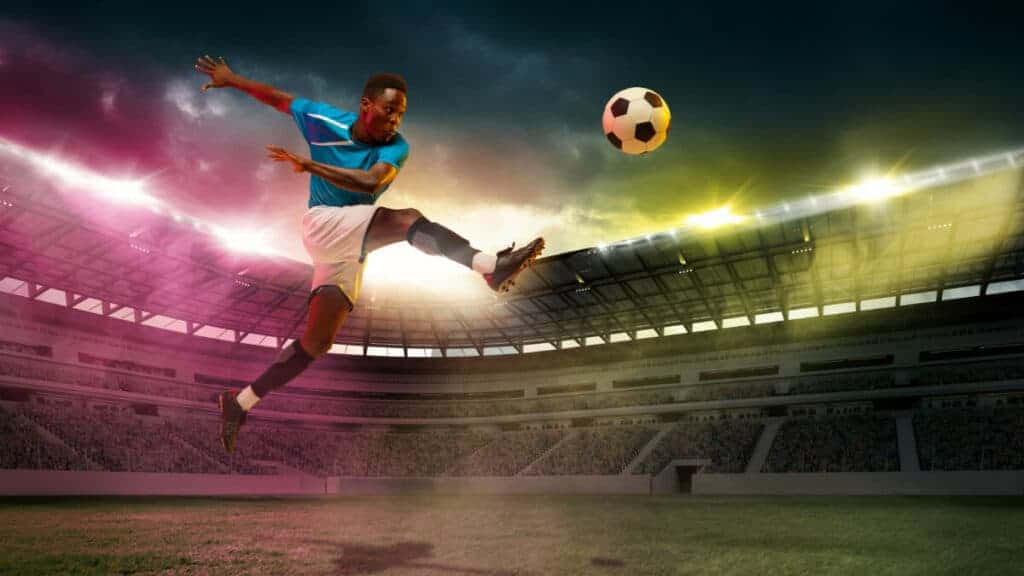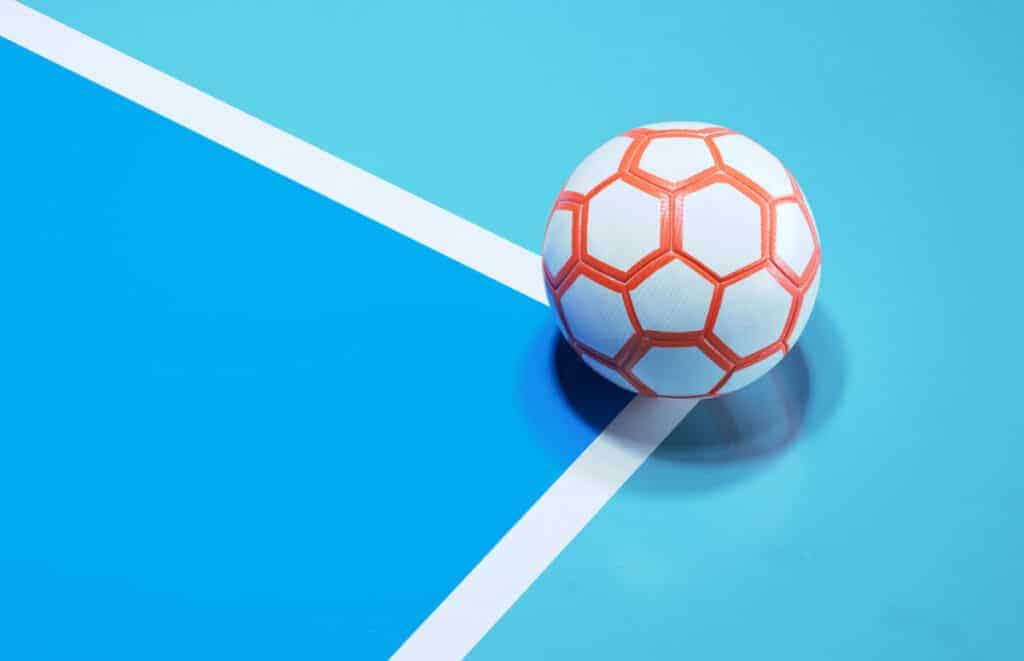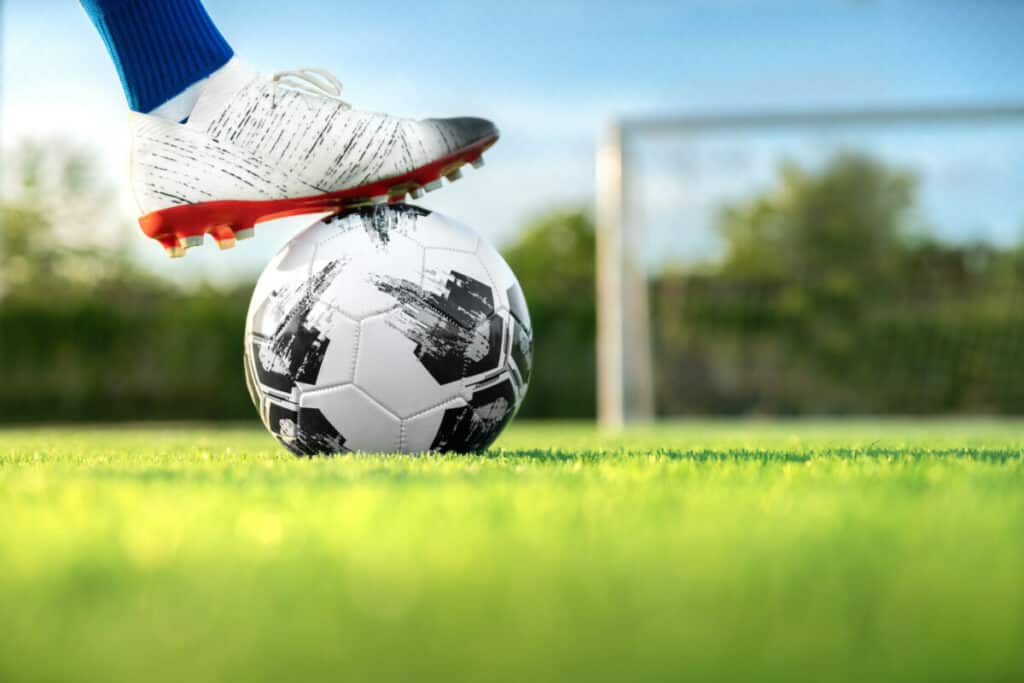does soccer have plays

You’ve probably heard of all the different play actions in American football, baseball, basketball, and other sports that help a team play defense or offense. But what about in soccer? Soccer is a unique sport that can easily be played just about anywhere with a field, but it doesn’t have any time-outs or stops aside from injury pauses, kickoff, and halftime, so does it have plays?
Soccer has set plays, with which about 35% of goals in one game are scored. These plays include corner kicks, free kicks, and throw-ins, as well as kickoffs and goal kicks. By definition, this is any time when the ball is stopped from motion and the attacking team performs an action to score a ball.
To learn more about set plays in soccer, and how each play is done, keep reading!
What are set plays in soccer?
Set plays in soccer, which are often referred to as set pieces, are referred to a time when the ball is returned to the open play after the game has stopped. These generally include corner kicks, free kicks, and sometimes throw-ins.
Kickoffs and goal kicks can be considered set plays, but they occur for a game to play out, not simply as a means to score extra goals on top of the regular shots to the goal. A kickoff happens at the start of every game, so it’s less strategic but still scripted, while goal kicks are the main purpose of the game and must happen throughout the game for a competition to be had and a team to win the game.

When it comes to corner kicks, free kicks, and throw-ins, they create an extra opportunity for players to score more goals on top of the regular gameplay. These goals are scored either directly or indirectly. Teams use these actions as a way to score between 30 and 40% of all their goals for the game, which makes a huge difference as compared to if they had not used any of these plays on top of goal kicks and the starting game kickoff.
Often set plays are practiced and rehearsed ahead of the game, during practice. Teams have different tactics and routines to work in these plays during the game whenever an opportunity arises.
Aside from these scripted plays in which players must follow a set of steps to complete the set play, teams will come up with their own passing patterns (in accordance with soccer rules) to make it difficult for the opposing team to keep track of the ball and take possession of it. These are also rehearsed in practice and training prior to the big games.
While corner kicks, free kicks, and throw-ins are the most common plays, there are several additional plays that players will attempt to master, including the wall pass, switching, and passing into space.
The corner kick play

A corner kick is given to the offensive team when the ball passes the goal line after it was last touched by a player of the defensive team and a goal had not been scored. The kick is taken by one player on the offensive team standing at the corner closest to where the ball had crossed over the goal line.
Generally, this job is given to the best kicker on the offensive team, to better help the team’s chances of scoring a goal. This is one of the best opportunities for a team to score a goal.
As the kicker is getting ready to take the corner kick, other players on the kicker’s team will gather around the goal line at an appropriate distance to be ready to charge the goal once the ball is kicked and try to score a goal if the ball is deflected by the goalpost or the goalie.
Defensive players will each choose an offensive player to keep track of and try to prevent them from getting in contact with the ball, then once the goal is scored or the ball is deflected far enough from the goal, the play is done.
The free kick play

The free kick is another way that players can score a goal, especially direct free kicks which are kicked close to the goal, but not inside the penalty area as that is considered a penalty kick. Free kicks generally occur as a penalty for a foul.
It’s meant to restart the play, and depending on how severe the foul is, the kick can be a direct kick or an indirect kick. For a free kick to play out, the defensive team will form a wall about 10 yards away from where the foul occurred which makes it more difficult for the offensive team to kick a direct goal, but either way, they must be at least 10 yards away from the ball, as the ball will be kicked where the foul occurred.
The offensive team will then often make the kick before the defensive team takes formation 10 yards away and without waiting for the referee to blow a whistle to indicate the restart. Doing so catches the defense by surprise while they’ve yet to get into position. This is an acceptable strategy by the offending team since the purpose of the play is to give the offended team an advantage, and not the team defending against the free kick.
The throw-in play
A throw-in isn’t always considered a play, but depending on the situation, it can be referred to as a set play in soccer. Throw-ins are awarded to the opponents of a team with a player who last came in contact with the ball after it passes over the touchline.

The touchline constitutes both lines that mark the sides of the field, perpendicular to the goal lines. This is the only time that a player other than the goalie can handle the ball. The offensive team will have a designated thrower (whether they be decided during the game or prior to the game) who must stand where the ball crossed the touchline with one part of both feet touching the touchline. Facing the field, they’ll then throw the ball overhead, and bring both their arms back behind their head to charge the throw.
Every member of the opposing team must be at least 2 yards away from where the thrower is standing, and the ball isn’t in play until it has been thrown and enters the field. The thrower can’t touch the ball once more until after it has come in contact with another player. If the ball falls to the ground before entering the field, then the throw-in is retaken once more by the same person.
If the thrower does not throw the ball in correctly, then the opposing team will be given a throw-in. They mustn’t throw the ball deliberately at an opponent in a careless or reckless manner, then the throw-in is awarded to the opposing team.
